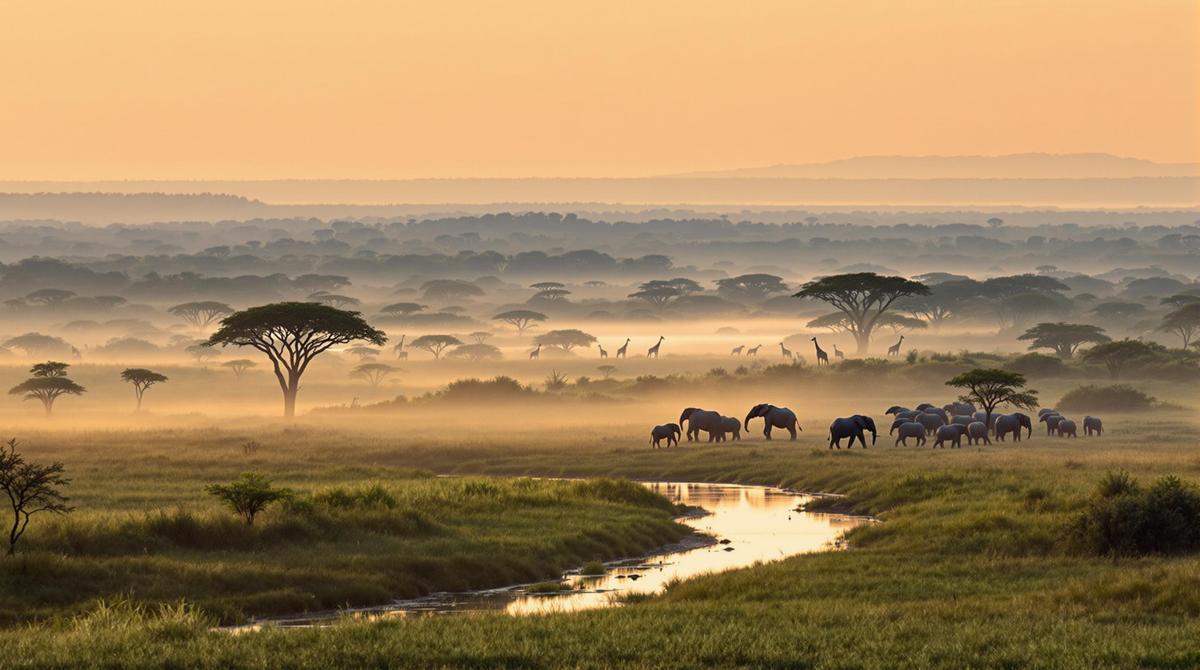In the remote northeastern corner of the Democratic Republic of Congo lies one of Africa’s most extraordinary wildlife sanctuaries – Garamba National Park. Established in 1938, this UNESCO World Heritage Site represents one of the continent’s most dramatic conservation stories, where breathtaking natural beauty exists alongside heart-wrenching challenges.
Africa’s forgotten paradise
Spanning over 5,133 square kilometers of diverse landscapes, Garamba boasts golden savannas that ripple in the breeze, dense forests hiding secret worlds, and waterways teeming with life. Once home to the last wild northern white rhinoceros, the park now stands as a powerful symbol of both conservation tragedy and resilience in one of Africa’s most troubled regions.
A wildlife kingdom under siege
Garamba’s elephant herds have endured decades of intensive poaching, yet somehow persist. Large-tusked savanna elephants still roam these lands alongside towering Kordofan giraffes, hippos, lions, and numerous antelope species. The park represents a wildlife stronghold that has withstood unimaginable pressures.
“Garamba embodies both the greatest challenges and the most inspiring successes in African conservation,” notes John Barrett, a wildlife researcher who has documented the park’s transformation. “Every animal here is a survivor.”
The remarkable turnaround
Since 2017, African Parks’ management has dramatically transformed Garamba’s security situation. Advanced anti-poaching efforts have reduced elephant poaching by over 97%, according to recent reports. This remarkable success story offers hope for other threatened African ecosystems facing similar challenges.
Garamba’s secret bird paradise
With over 350 documented bird species, including the striking shoebill stork and colorful Abyssinian ground hornbill, Garamba offers bird enthusiasts an experience rivaling more famous destinations. Dawn chorus here creates a symphony unlike anywhere else, as hundreds of species announce the day’s arrival across the misty savanna.
The cultural crossroads
The communities surrounding Garamba represent a fascinating cultural tapestry. Local villages maintain traditional practices while adapting to modern conservation approaches. Much like sacred places in other cultures, certain areas within the park hold special significance to indigenous communities.
A traveler’s ultimate adventure
Visiting Garamba isn’t for the casual tourist – it’s for the true adventurer. Reaching this remote paradise requires determination, typically involving chartered flights to Nagero Airfield. The reward? An authentic wilderness experience that few modern travelers will ever know, far from the crowds found at other natural destinations.
“When you witness sunset over Garamba’s plains, something shifts in your soul,” explains Marie Fontaine, conservation photographer. “This place haunts you – in the most beautiful way possible.”
Experience the untamed wild
Game drives here offer heart-stopping encounters with wildlife that haven’t become habituated to vehicles. Unlike mountain escapes with predictable attractions, Garamba’s appeal lies in its wildness and unpredictability. Each journey becomes a genuine expedition of discovery.
Practical considerations
Garamba Lodge provides comfortable accommodation with electricity, hot water, and meals. Visitors must obtain proper permissions, carry yellow fever vaccination certificates, and arrange transportation well in advance. The dry season (December-March) offers optimal wildlife viewing conditions when animals concentrate around water sources.
The unsung guardians
Park rangers here risk their lives daily protecting wildlife. Their stories of courage against armed poachers and dedication to conservation despite tremendous odds represent the human element that makes Garamba’s story so compelling. Many have made the ultimate sacrifice to protect this natural treasure.
A sunrise like no other
Unlike famous sunset markets in Thailand, Garamba’s most magical moments happen at dawn. As first light breaks across the savanna, elephants emerge from forest edges, giraffes create striking silhouettes against the golden horizon, and the day’s adventure begins anew in one of Earth’s last truly wild places.
